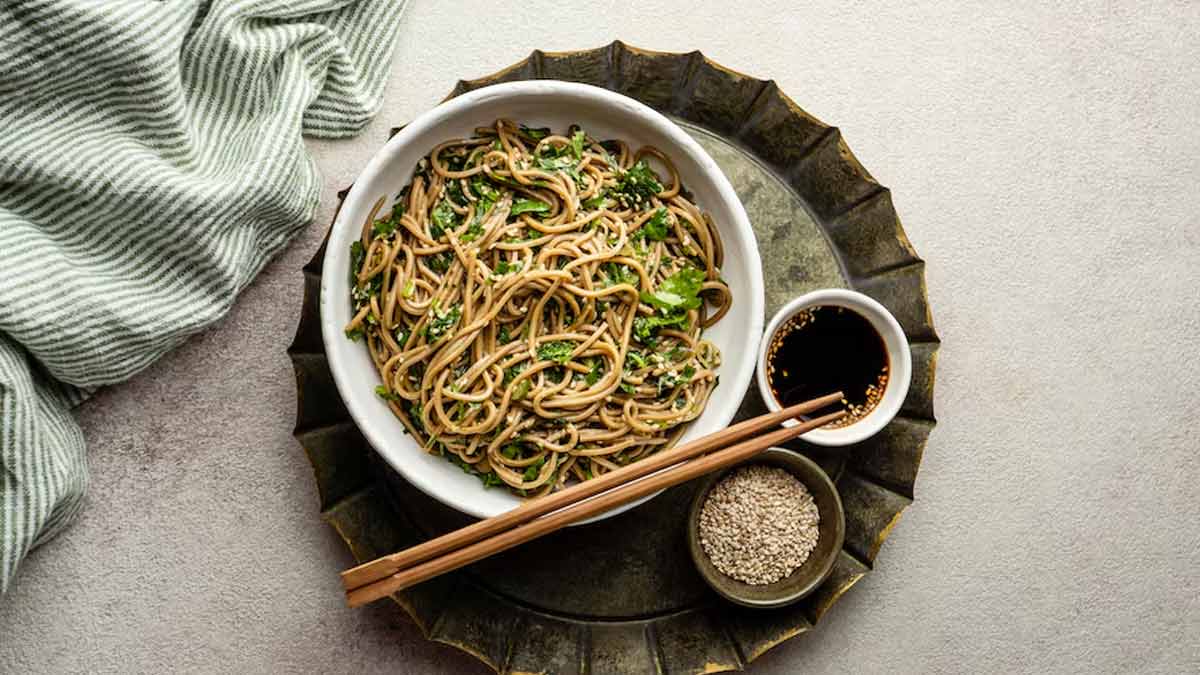
With the growing trend toward healthier eating, people are constantly seeking alternatives to traditional processed foods. One such option that has gained immense popularity is millet noodles. But how do they compare to regular noodles? Are millet noodles really healthier?
Table of Content:-
Millet noodles are made from millets, a group of small-seeded, nutrient-dense grains that have been cultivated for thousands of years. There are different types of millets, such as foxtail millet, pearl millet, finger millet (ragi), sorghum (jowar), and barnyard millet, each bringing unique nutritional benefits. These noodles are gluten-free and rich in fibre, making them an ideal alternative for people with gluten sensitivities or those looking for healthier meal options.
Nutritional Comparison: Millet Noodles vs Regular Noodles

1. Fibre Content
One of the significant advantages of millet noodles is their high fibre content. While regular noodles made from refined wheat flour (maida) have little to no fibre, millet noodles are packed with fibre. For instance, finger millet (ragi) is known for being high in dietary fibre, which aids digestion and prevents constipation. A fibre-rich diet also helps maintain satiety, reducing hunger pangs and promoting weight loss.
2. Protein and Micronutrients
Millets are also a source of plant-based protein. For example, foxtail millet and pearl millet are particularly known for their protein content, making millet noodles a good option for vegetarians looking to boost their protein intake. In contrast, regular noodles, especially instant noodles, are generally low in protein.
Moreover, millet noodles are rich in essential micronutrients like iron, magnesium, potassium, and B vitamins. Finger millet (ragi), in particular, is a great source of calcium, making it beneficial for bone health.
On the other hand, regular noodles lack these micronutrients, especially when they are made from refined wheat flour, which undergoes processing that strips away essential nutrients.
3. Glycemic Index
The glycemic index (GI) measures how quickly a food raises blood sugar levels. Foods with a high GI can cause rapid spikes in blood sugar, leading to energy crashes and increased hunger. Millet noodles generally have a lower GI compared to regular wheat noodles. For example, foxtail millet has a GI of 50, while refined wheat noodles typically have a GI between 60 and 70.
For individuals managing diabetes or those trying to maintain stable energy levels, millet noodles are a better option due to their slow digestion and lower impact on blood sugar.
Also read: Viral Video Explains The Health Risks Of Eating Instant Noodles
Millet Noodles: Health Benefits

Good for Weight Management
The high fibre and low GI in millet noodles make them excellent for weight management. They help in keeping you full for a longer time, reducing overall calorie intake.
Promotes Heart Health
Millets are known to be rich in magnesium, a mineral that helps relax blood vessels and reduce blood pressure. Consuming millet noodles can thus contribute to better heart health.
Supports Digestive Health
The high fibre content aids in smooth digestion and can prevent issues like bloating and constipation, which are sometimes caused by regular noodles made from maida.
Gluten-Free
For people with gluten sensitivity or celiac disease, millet noodles are a safe and healthy option. They provide a tasty alternative without triggering gluten-related issues.
Packed with Antioxidants
Millets contain antioxidants that help combat oxidative stress in the body. Finger millet, for instance, has high levels of polyphenols, which have anti-aging and disease-preventing properties.
Also read: Here's Why You Should Choose Millet Flours Over Wheat And Maida
Downsides of Regular Noodles

Highly Processed
Regular noodles, especially instant noodles, are highly processed and contain additives, preservatives, and excessive salt, all of which can negatively impact health.
Low Nutritional Value
Since regular noodles are made from refined wheat flour, they offer little nutritional value. The refining process removes the bran and germ, leaving behind a product that’s mostly carbs with very little fibre, vitamins, or minerals.
High in Unhealthy Fats
Many instant noodles are fried before packaging, making them high in unhealthy trans fats, which can raise cholesterol levels and increase the risk of heart disease.
Conclusion
Millet noodles are indeed a healthier option compared to regular noodles. They are nutrient-dense, fibre-rich, and low on the glycemic index, making them a smart choice for anyone looking to adopt a healthier diet. Whether you’re focused on weight loss, managing diabetes, or simply trying to eat cleaner, switching to millet noodles is a beneficial move. Plus, they offer the added bonus of being gluten-free, making them accessible to those with gluten sensitivities.
Also watch this video
How we keep this article up to date:
We work with experts and keep a close eye on the latest in health and wellness. Whenever there is a new research or helpful information, we update our articles with accurate and useful advice.
Current Version